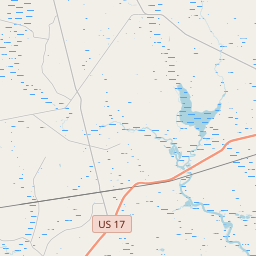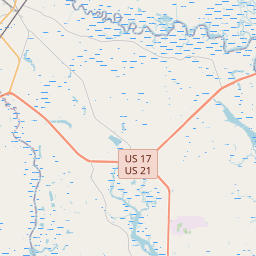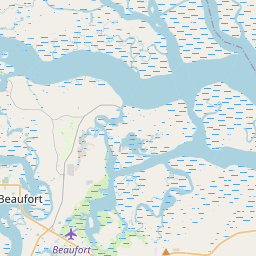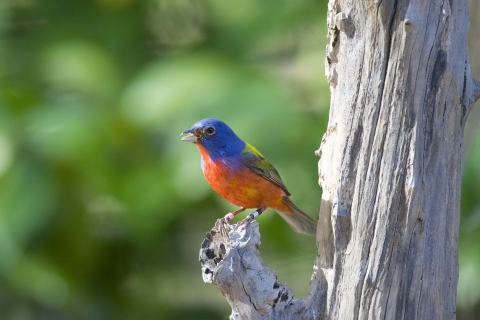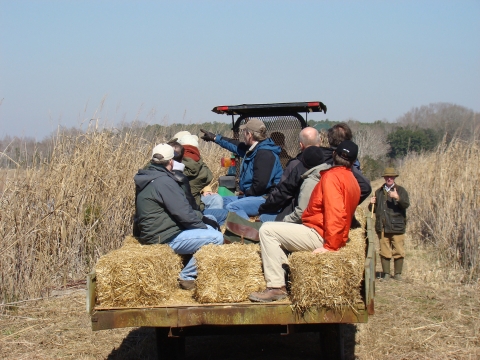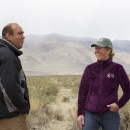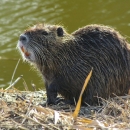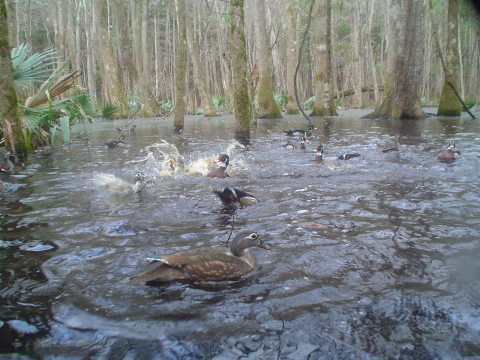Visit Us
Ernest F.Hollings ACE Basin NWR is drained by two significant river systems: the Combahee-Salkahatchie and the South Edisto. A mosaic of lands and waters, the refuge harbors an abundance of migratory and resident birds, reptiles and amphibians, fish and other wildlife. These diverse habitats and wildlife offer a variety of traditional, outdoor recreation pastimes. Enjoy hiking and biking, photography, birding and observing other wildlife, hunting and fishing.
The refuge is rich in cultural as well as natural history. Located within the Edisto Unit is the Grove Plantation. The refuge headquarters and visitor station is the Grove House, a former rice plantation manor built in 1828, and one of only three antebellum mansions in the area that survived the Civil War. The Grove Plantation Manor is listed on the National Register of Historic Places.
The Edisto Unit is closed to hiking during deer hunting season. Please contact the refuge office at (843) 889-3084 for scheduled hunt dates.
Location and Contact Information
- Ernest F. Hollings Ace Basin National Wildlife RefugeView Details8675 Willtown Road Hollywood, SC 29449
About Us
The E.F.H. ACE Basin NWR Edisto Unit, is located approximately 20 miles southwest of Charleston and lies along the South Edisto River. The Combahee Unit is located about 20 miles northwest of Beaufort. The refuge contains exceptional wildlife habitat and provides haven for a vast array of birds, fish, and many other animals including endangered and threatened species.
Rich in cultural history, sixteen archaeological sites have been identified on the refuge including the Grove Plantation. Jehossee Island, a significant archeological area, has been assessed for eligibility for both a rural historic landscape and historic district. Jehossee Island is not open to the public.
Tours
Partnerships with historical associations, resource agencies and organizations, and colleges provide opportunities for environmental studies and specialized tours on the refuge.Tours may be coordinated with the Refuge Manager. Please contact the Manager at (843) 889-3084.
What We Do
E.F.H. ACE Basin NWR manages its intricate network of marshes and tidal creeks, forested uplands and wetlands, fields and impoundments to support the myriad of plants and wildlife.
Committed to preserving the natural resources to assure that all habitats and wildlife continue to thrive, conservation management requires a variety of techniques that include moist soil management, prescribed fire, agricultural planting of crops for wildlife, forestry techniques, and trapping to control populations and protect endangered and threatened species and migratory birds. Wholesome wildlife-dependent activities are offered that are compatible with refuge objectives for wildlife and habitats. Hunting and fishing are allowed on specific areas of the refuge and are in accordance with state and specific refuge regulations. Hiking trails on both the Combahee and Edisto have great areas for birding and other wildlife watching. With beautiful landscape vistas and historic cultural sites, the refuge is a popular destination for those interested in photography.
Be sure to check the hunting and fishing regulations brochure. Please call the office at (843) 889-3084 for more information on recreation opportunities on the refuge.
Our Organization
Ernest F. Hollings ACE Basin NWR works collectively with federal, state and local agencies, conservation organizations, private landowners and individuals to support conservation programs in keeping with the mission of the National Wildlife Refuge System and this refuge. At the E.F.H. ACE Basin and the greater ACE Basin System, with its extensive wetland areas and a myriad of diverse wildlife and fish species, programs are undertaken to enhance and restore habitat and wildlife and fish populations, migratory birds, and preserve the historic and cultural sites at the refuge.
Our Species
E.F.H. ACE Basin NWR was established to conserve and enhance a nationally significant ecosystem that provides a complex of habitats for fish and shellfish, wintering waterfowl, endangered and threatened species, migratory and resident birds and other upland animals. Lying along the Atlantic Flyway, the refuge is rich in birdlife year-round. The refuge provides a haven for the rare and secretive Black rail and neotropical summer migrants including the Painted bunting, Prothonatary warbler and Summer tanager. Wetland habitats at ACE Basin support numerous wintering waterfowl species such as gadwall, teal, canvasback, scaup, red head and ring-necked ducks, as well as many wading birds, particularly the threatened Wood stork. Designated as an Important Bird Area by the National Audubon Society, as many as 291 bird species have been recorded on the refuge.
Get Involved
Whether you want to further conservation, learn more about nature or share your love of the outdoors, you’ve come to the right place. National wildlife refuges provide many opportunities for you to help your community and fish and wildlife by doing what you love. Put your passions and skills to work at E.F.H. ACE Basin NWR! Join refuge staff and volunteers to enhance wildlife habitat, participate in wildlife studies and surveys, and garner community support for refuge programs and resources.
Get in touch. Contact the Refuge Manager at (843) 889-3084 or email acebasin@fws.gov
Projects and Research
E.F.H. ACE Basin NWR is a significant area within the larger ACE Basin Project. The refuge works within the Project and with the Ace Basin Task Force to protect a riverine ecosystem, maintain quality habitats for waterfowl, neotropical migratory birds, threatened Wood storks and, manage wetland units to support diverse wildlife species. The Task Force is a consortium of private landowners, conservation organizations, state and federal agencies organized to plan and coordinate protection efforts within the Basin. The Task Force works to maintain the Basin's natural character, protect strategic tracts of habitat and, ensure that traditional uses like farming, forestry, recreational and commercial fishing, and hunting will continue.





